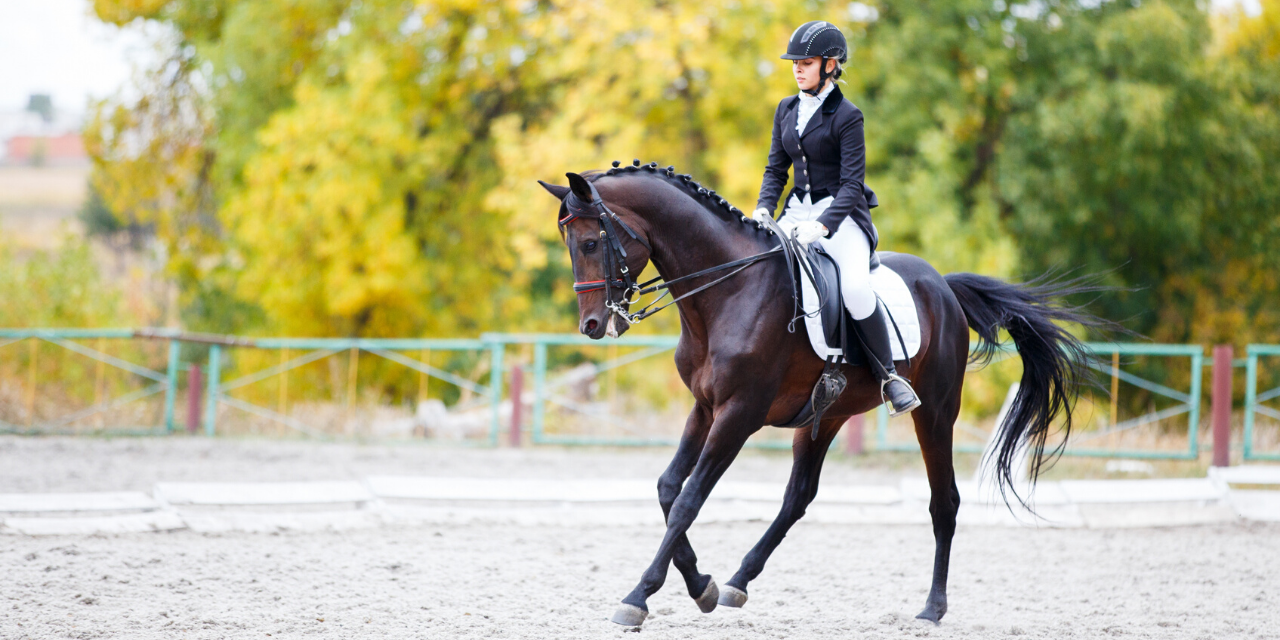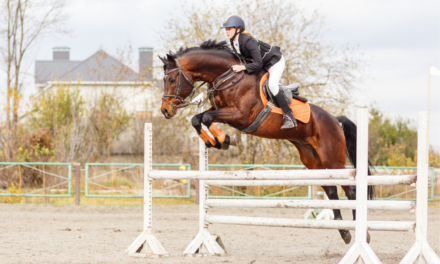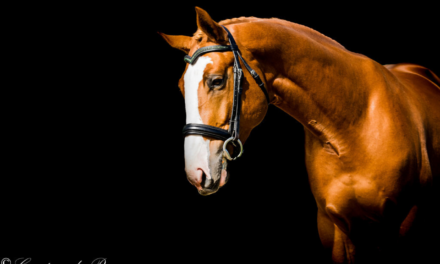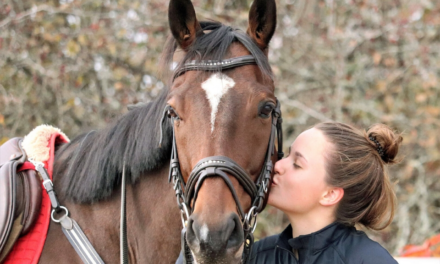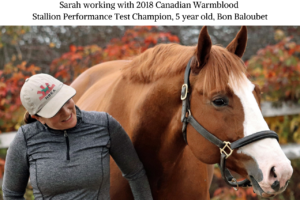We may earn money or products from the companies mentioned in this post. For more information please check out our disclosure page
Do you want to know how to fix those annoying position problems? You have tried and tried but no matter what they just wont go away.
I get it and you are not alone. These 11 rider position issues are called rider issues for a reason! They are common problems for many riders.



So what can you do to fix your most frustrating riding issues? Read on!
1. My heels won’t stay down
When your heels rise up, your upper body is unbalanced and will tip forward or backwards. Jumping becomes unbalanced and the leg swings.
How do you fix it?
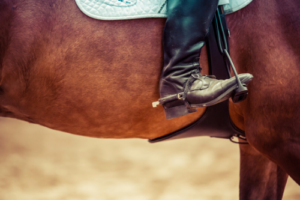
.
Firstly, at the walk, put your weight down into your heel and ask your horse to move up in front of your leg. Your horse needs to be going forward in front of the leg so make sure he responds correctly when you ask him to move forward.
Secondly we are going to get up into two point while still at the walk. It is important that we don’t pinch at the knee so to make sure that doesn’t happen do the following in stages:
- put your hands forward and the hold mane so you don't pull on your horses’ mouth.
- with the ball of your foot on your stirrup iron, step into your heel and start to lift your body upward.
- make sure your knee is open and not pinching.
- close your hip angle to establish your two-point position.
- relax your weight downward.
- feel your inner thigh and upper inner calf resting near your horse's side, this is not because you're gripping, but because you're stretching.
- drop your heel as much as possible by relaxing your ankle side-to-side (not up and down—ankles don't work that way).
Continue to ride in this balanced two-point position in all three gaits until it feels completely automatic.
Plenty of time in two-point is absolutely key to making “heels down” a habit.
2. I throw (or lean) my upper body at jumps
When we ‘throw’ our upper body at the fence our upper body drops forward. When this happens your knee grips (pinches) and your lower leg will slide back.
Your horse can no longer push from his hind end. If you have a good horse you may get an awkward jump, or if you have a less honest horse they will more than likely refuse and given your position or being too forward you will probably get dumped.
Throwing yourself at the jump prevents your horse from coming up and closing your angle as he jumps, because you are doing it yourself. This means you are leaving the ground before he does.
How do you fix it?
- shorten your stirrups two or three holes
- stretch up, which brings the inside of your leg flat against your horse with your toe higher than your heel.
This strong base will automatically put your upper body over your center of gravity.
Leaning is virtually impossible if your base is centered.
Keep your arms and hands out in front of you.
3. My lower legs swing
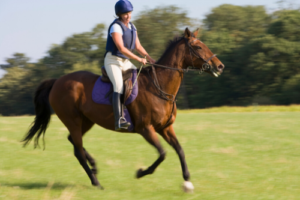
.
When the lower legs are loose you will constantly lose your stirrup iron. As a result you will have trouble keeping weight in your heels and your leg will slip behind the girth
No matter what your upper body tips forward over a jump. A correct lower leg is extremely important because it gives your whole position a foundation.
How do you fix it?
- shorten your stirrups so that the angle behind your knee is approximately 90-105 degrees.
- there should be an imaginary straight line connecting the back of your heels to your hips to your shoulders.
- drop your weight into your heels and turn your toes out anywhere from 35-45 degrees to put the strongest part of your calf (the lower inside back) on your horse's. If your toe isn't angled out enough, you'll have a hard time keeping your calf on; if it's out too much, your knee will come off the saddle, you'll have the back of your calf on your horse and your leg won't be as strong.
To get used to your correct stirrup length and to concentrate on holding your lower leg in the correct position and strengthen it, practice this simple posting-trot exercise:
With your leg in the correct position and your body about 25 degrees in front of the vertical, pick up the posting trot.
Let your horse's movement push you up out of the saddle. As you do, feel about 20 percent of your leg pressure shift up from your calf into your knee and thigh—but remember to keep your lower leg at the girth.
To reinforce your lower-leg position, as you reach the highest point of your post, make a concentrated effort to push weight into your heels.
Descending, use your thigh muscles to ease the front quarter of your bottom into the saddle.
If you get tired and feel your leg fall out of position take a walk break and then start again.
4. I pinch with my thighs and knees
Pinching tends to turn your heel out and to take your lower leg off, allow it to float back.
What keeps you on a horse is getting your center of gravity as low as you can which is down into your heels. If your center of gravity stops at your knees, when you get into trouble with a horse you will come off because you don’t have your center of gravity in the right place!
How do your fix it?
- take your feet out of the stirrups and at walk, trot, and canter (when you are strong enough), practice the following exercises:
- let your legs hang down
- then alternately straighten and bend your knees so they swing independent of your horse's sides.
- as your left leg straightens, your right leg bends and vice versa in the next stride.
- lift your knee straight up—not out to the side—holding it just long enough to break your grip, then let it drop down again.
5. I look down all the time
When your head is out of alignment, you may collapse forward, impair your vision, and compromise your ability to turn your horse.
H0w do you fix this?
When you hold your head up you align it with your spine, this will help you align the rest of your upper body. To help fix this problem do the following exercise:
- begin a posting trot and take both reins in your outside hand with a light contact.
- raise your inside hand straight out in front of you at shoulder height and keep your eyes on it;
- extend it to the side, then rotate your extended arm and hand from your shoulder, reaching as far behind you as you comfortably can.
- as you continue watching your inside hand through these motions, maintain a steady posting trot. reverse direction and repeat.
If you do it for a few minutes each time you ride, it will help you develop balance, and the independent use of your eyes and head.
6. I hunch my shoulders and collapse my chest
When you round your shoulders forward, collapse your chest, you send your center of gravity ahead of your horse's.
Tension will go through your arms, through your body, causing your knees to pinch.
This will cause your leg to pivot, your heels will come up and your lower leg will come back.
How do you fix it?
- at the walk, shake out each arm to get rid of any tension.
- take a deep breath which will relax, lift and open your chest.
- roll your shoulders up toward your ears, then push them back and down.
- repeat
Ultimately you want an open chest, shoulders back and down and a soft, following contact.
7. I get ahead of my horse's motion
When you're ahead of the motion, you're in front of your horse's center of gravity. Like leaning with your upper body, this unbalances your horse making pushing off and leaving the ground difficult.
How do you fix it?
- set a small cross rail or low vertical halfway up the long side of your arena with ground poles on both sides so you can jump it in both directions.
- at a working canter on the right rein, get in two-point.
- pick a focal point at the end of the arena, especially important if you tend to duck and look down.
- focus on staying in two-point on the approach and as you jump the fence, make sure your hip angle is at about 25 degrees.
- make sure you don’t drop your body forward, stand up, or duck. Just canter up in two-point and jump the jump.
8. I duck over fences
Ducking is something you do just as your horses front legs leave the ground. Ducking causes your seat to become very high and forward, making your knee angle almost straight.
When your hip has this much closure over the top of the jump, you usually end up too closed when your horse's feet touch the ground. That throws off your balance, making you pivot on your knee so your lower leg comes back and your heel comes up.
How do you fix it?
- set up a line of two-foot cross rails or verticals set at 60 feet apart. A horse with an average stride can normally trot the first fence and canter down to the second in five strides.
- the purpose of this exercise is to give you the feel of what it's like to keep your body absolutely still as your horse jumps.
- pick up a trot to the first fence. As soon as you have the two fences lined up, and while you're still several strides from the first, get into your two-point position.
- put your reins into one hand, and position that hand in a short crest release.
- grasp the mane about halfway up the neck approximately where you'd put your hand in a long crest release. Holding the mane in this way will isolate your upper body and prevent you from ducking.
- pick out a focal point at the end of the line and look up and ahead.
Focus on keeping your upper body motionless as your horse jumps the first fence, canters down the five strides and jumps the second fence. Keep your weight in your heels, and don't let your hip angle change.
9. I use my hands too much on course
This will cause you to have trouble seeing distances out of the turns or add strides in. It will affect your rhythm and prevent your horse from keeping balanced on course and having proper preparation to the jumps.
How do you fix it:
- set a pole on the ground 9 feed away from a low vertical. You will need to set it up so you have room to make a figure 8 of 2 circles in both directions after the jump.
- jump the fence straight, then circle to the right, looking where you want your horse to go.
- if your horse starts to fall in on the circle you will need to open your outside rein and use your inside leg to pushing him into your outside rein, keep your inside rein lying against your horses’ neck.
- if your horse is leaning on the outside rein you will need to open your inside rein and let your outside rein rest on your horses’ neck.
By using this technique you are using a separated open rein to guide your horse around the circle and not using your rein to jerk him around.
When you reach the halfway point of each circle start to soften your arms to relax them and allow yourself to start to see the distance. Make sure you don’t use your hands to interfere at this point. Allow the distance you have be the distance you accept, good or bad.
10. My elbows stick out when I ride
When your elbows stick out you cannot apply your rein aids properly. It affects your upper body position, curling your shoulders in and you will not be able to open your chest properly
How do you fix it?
- make sure your hands have their knuckles facing each other with the thumbs on top of the reins, pointing at your horses ears at all times.
- by keeping your knuckles facing each other so your thumb tips are point at the ears, your elbows will naturally come in towards your body and your chest will open. You don’t have to focus on your elbows as this small change will do all the work for you!
- when you hold your knuckles facing each other imagine you are holding a 4 finger kitkat with the main label facing up. This is the distance your hands to be apart.
11. I bounce while trying to sit the trot
You are out of sync with the up-and-down motion of your horse's back. It is extremely uncomfortable for both you and your horse.
How do you fix it?
You will need to keep the trot fairly slow and quiet to start off with until you develop your feel for ‘the sit’. A faster trot motion at this point will make you feel un-coordinated. While you practice, slowing things down will make sitting easier.
- you will need to pick up the slow trot for a few strides. If you find you're losing your position, immediately walk and reorganize and then try again.
- the only way you will learn to do the sitting trot properly is by doing it right from the start. If you do it wrong and don’t correct it you will continue learning the wrong way.
Any time you feel as though you are being bounced around, you will feel like you are out of control. Two ways to think about sitting the trot are:
- to think about ‘brushing’ the saddle with your seat at all times, or
- by imagining you are using your seat to continually push the saddle down.
- you need to be moving your seat into the saddle the whole time. To do this you will need to allow your hips to be flexible and encourage the motion through them.
To build up your ability to sit the trot, keep repeating the slow trot and once you feel you are gaining in your ability to you can start to add strides, and eventually allow the trot to develop from slow to medium.
admin
Latest posts by admin (see all)
- A Horse For All Reasons – Guest Blog by Lucy from Horse Factbook - April 8, 2020
- How To Deal With A Spooky Horse Trail Riding - March 31, 2020
- Our Top 20 Amazon Equestrian Products - January 30, 2020

